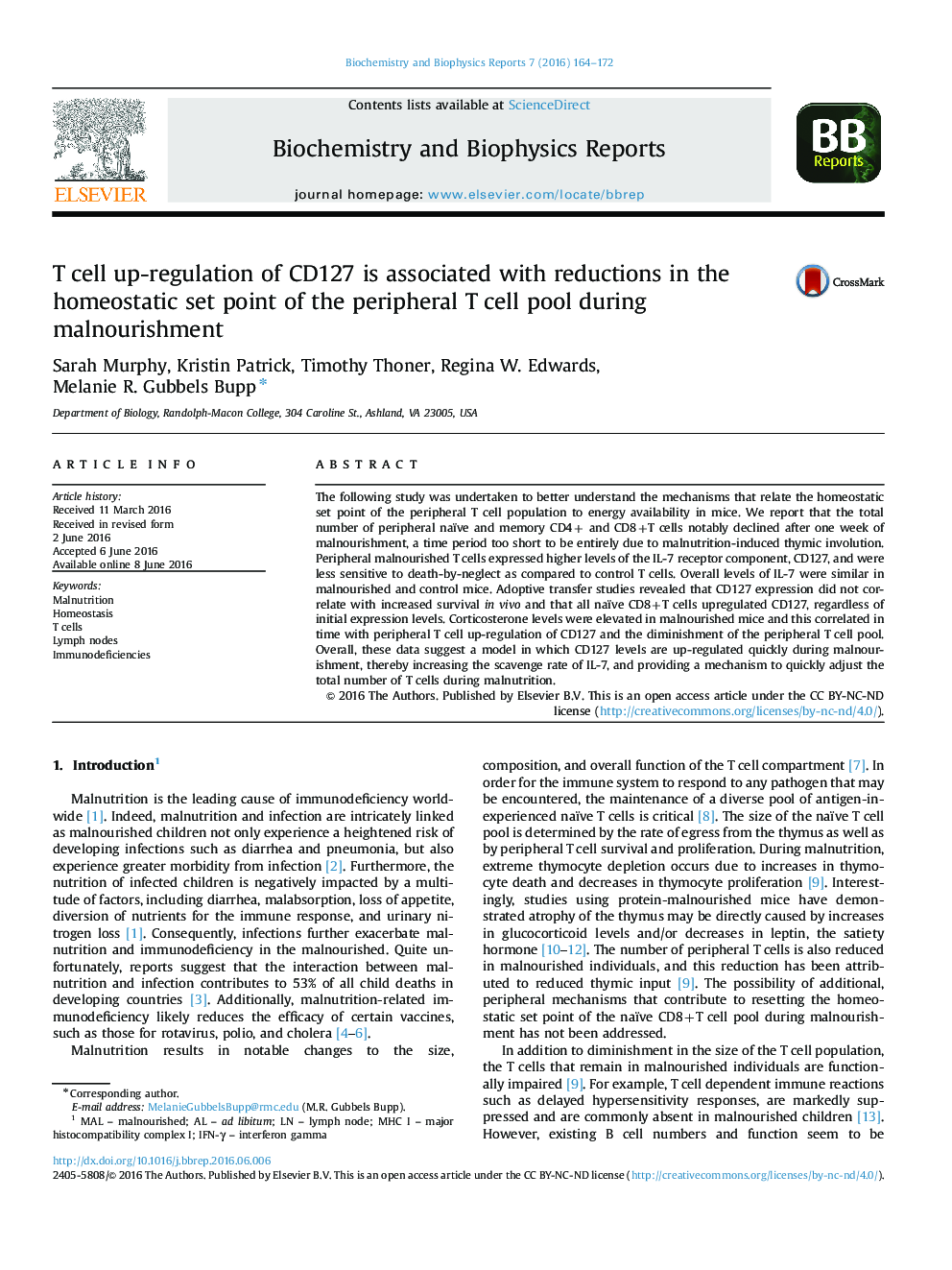| Article ID | Journal | Published Year | Pages | File Type |
|---|---|---|---|---|
| 1941616 | Biochemistry and Biophysics Reports | 2016 | 9 Pages |
•Malnourishment results in reduced numbers of peripheral CD8+T cells.•The IL-7R alpha subunit, CD127 is up-regulated on CD8+T cells during malnourishment.•Malnourished CD8+T cells are less sensitive to death-by-neglect.•Levels of IL-7 are unchanged in malnourishment, while glucocorticoids are elevated.
The following study was undertaken to better understand the mechanisms that relate the homeostatic set point of the peripheral T cell population to energy availability in mice. We report that the total number of peripheral naïve and memory CD4+ and CD8+T cells notably declined after one week of malnourishment, a time period too short to be entirely due to malnutrition-induced thymic involution. Peripheral malnourished T cells expressed higher levels of the IL-7 receptor component, CD127, and were less sensitive to death-by-neglect as compared to control T cells. Overall levels of IL-7 were similar in malnourished and control mice. Adoptive transfer studies revealed that CD127 expression did not correlate with increased survival in vivo and that all naïve CD8+T cells upregulated CD127, regardless of initial expression levels. Corticosterone levels were elevated in malnourished mice and this correlated in time with peripheral T cell up-regulation of CD127 and the diminishment of the peripheral T cell pool. Overall, these data suggest a model in which CD127 levels are up-regulated quickly during malnourishment, thereby increasing the scavenge rate of IL-7, and providing a mechanism to quickly adjust the total number of T cells during malnutrition.
Graphical abstractFigure optionsDownload full-size imageDownload as PowerPoint slide
